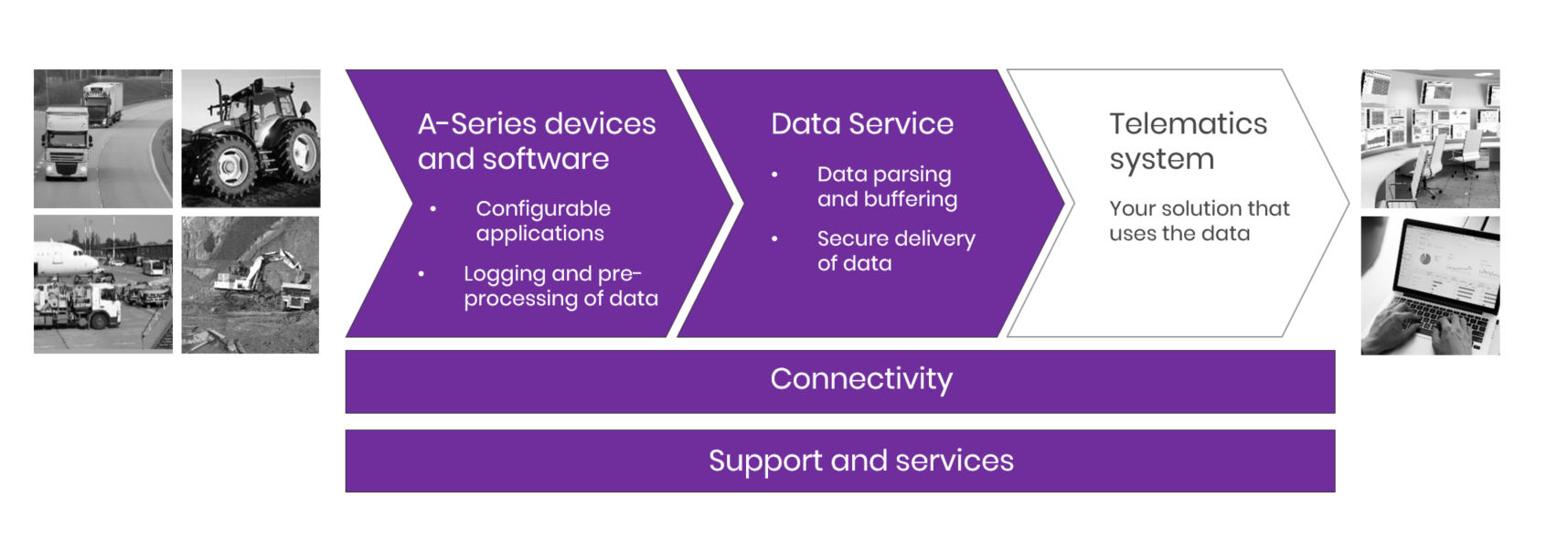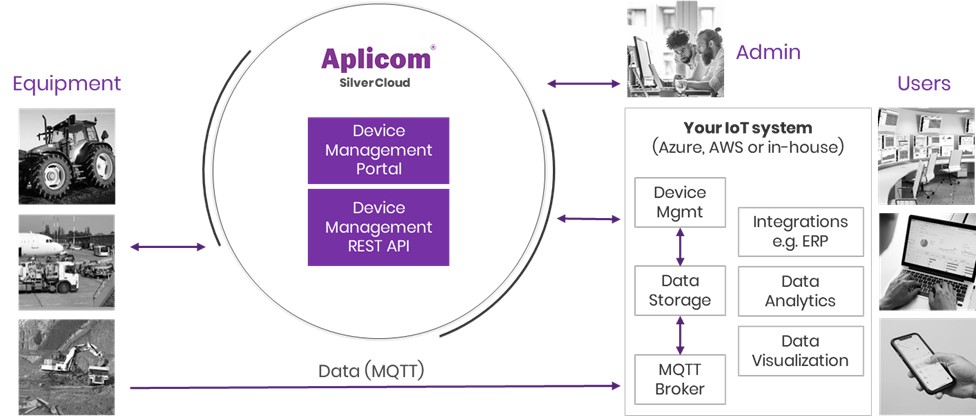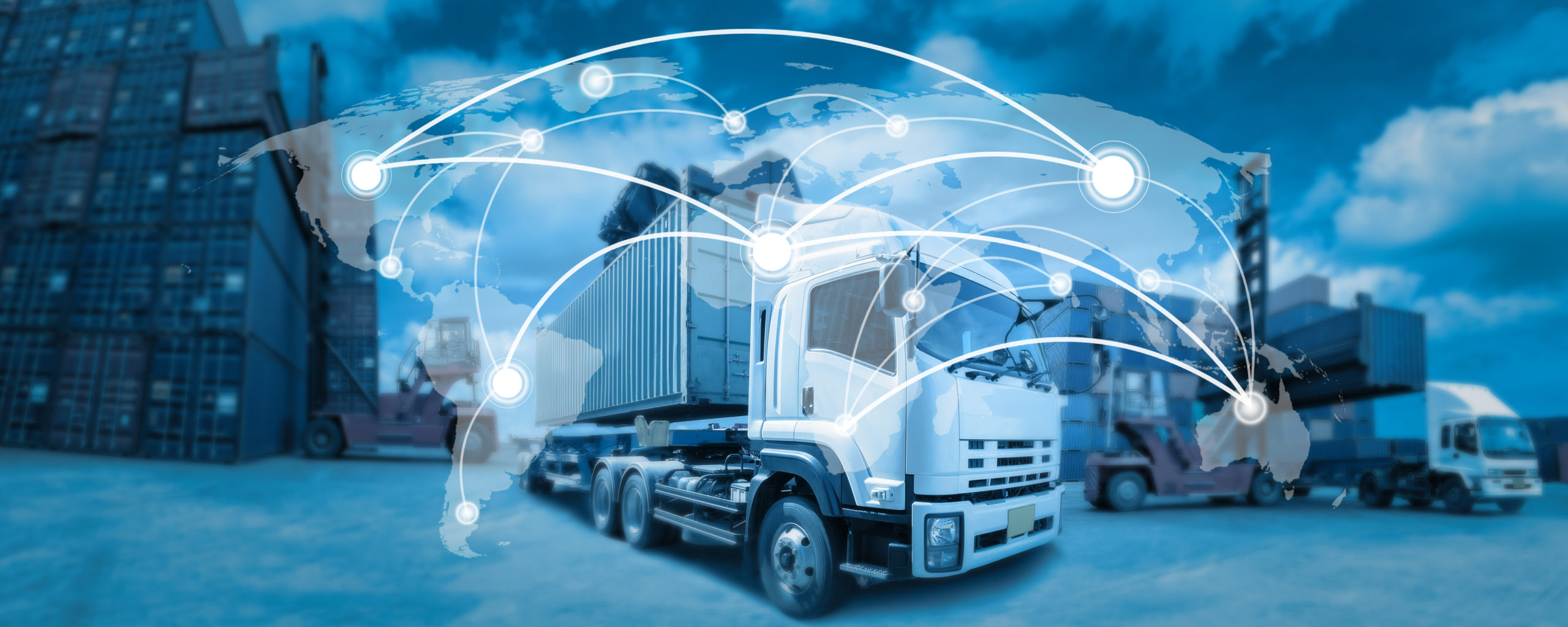Every time someone who doesn’t work in my field asks me what I do, and I tell them “Telematics”, the next question is: “What’s telematics?”
My short explanation is always the same: “with telematics, you can measure and analyse things that interest you, like location, speed, temperature, operating time, although in theory, they could be anything that’s measurable. You can then use this data to increase efficiency and reduce costs, which can lead to revenue growth, a reduction in carbon emissions, or other business and operational goals.“
Here, I’d like to go a bit deeper, but keep it understandable, so that everyone can get the main point. This article is for those who’d like to understand telematics better. There are a few specialist terms, so there’s a glossary at the end to help you.
What is telematics?
First, there is the device. A usable telematics device consists of both hardware and software. There are many different kinds of devices with different kinds of options, but they all have one thing in common: the device collects data and sends it to a server via a mobile network. This process is sometimes referred to as IoT – the Internet of Things. Nowadays, 4G (LTE) is becoming the most commonly used mobile standard in telematics. An Aplicom telematics device is installed in a vehicle, machine or whatever you want to collect data from.
Typical information collected includes:
- Operating hours
- Location, speed and acceleration
- Machine identification (ID)
- Driver ID
- Technical data (e.g., fuel consumption, engine temperature, etc.), often over a Controller Area Network (CAN) bus
- ID or data from Bluetooth sensors, e.g., temperature
How is the data collected?
The data is collected from internal and external sensors, like a positioning device (Global Navigation Satellite System, GNSS), accelerometer, CAN or Bluetooth Low Energy (BLE). Usually it is collected and sent to the data server at specific intervals which can be defined by configuration.
In Aplicom telematics devices, application logic can be implemented without programming. They only need configuring with our easy-to use tools.
How is the data delivered?
Data can be delivered in many ways: to a standard REST API, or over a data protocol like MQTT protocol or dedicated protocols. We offer our customers two cloud services: Aplicom Data Service (ADS) for data transfer from A-Series devices and Aplicom Silver Cloud for device management of T-Series devices.
Aplicom Data Service, ADS is a cloud service that offers a data buffer to ensure reliable data transfer in all situations. The programming interface is a common REST-type interface. ADS gives access to all the data that is delivered by the A-Series telematics software.
Aplicom Silver Cloud comprises Aplicom T-Series devices, cellular connectivity and integrated device management for the seamless integration and operation of a device fleet. The devices can be easily configured to send data to Microsoft Azure, Amazon AWS or some other IoT solution through the widely-used MQTT protocol.
This diagram shows how it all goes together.


BLE, CAN, GNSS, IoT, LTE, MQTT, REST API – What?
As you’ve seen in this article, there are a few technical terms involved in telematics. Here’s a list of the terms I’ve used to help clarify any you might not know.
BLE – Bluetooth Low Energy is a wireless technology intended to reduce the power requirements of Bluetooth devices while maintaining range. BLE devices are designed to operate for months or even years on a button cell battery. There are several different types of BLE device profiles offering different services (e.g., medical applications like heart rate monitors would be different to entertainment applications like headphones). One class of BLE devices is Bluetooth Beacons, that repeatedly transmit a signal at regular intervals that other devices can see. Beacons are used in advertising, indoor positioning systems, notifications, trackers and to act as wireless sensors to send data , like temperature.
CAN – Controller Area Network is a data bus used in vehicles. It helps all the control devices in the vehicle to communicate with each other. A contactless CAN reader is able to read CAN data without any wire connections.
GNSS – Global Navigation Satellite System is any worldwide satellite navigation system such as GLONASS, GPS and Galileo.
IoT – Internet of Things (also IIoT – Industrial Internet of Things) is based on the remote monitoring or control of technical devices connected to the Internet. IoT refers to the whole process in which a huge amount of data about a machine (e.g., a vehicle) is collected automatically by a device connected to that machine and sent to a computer cloud via the Internet so it can be processed and analysed and put to some practical purpose.
4G LTE – Long Term Evolution (also known as LTE ) is the fourth generation wireless broadband communication standard for electronic communications devices. 4G can reach a higher data transfer rate than its predecessor 3G. LTE indicates that it is intended to be a long-lasting platform that will offer new features through evolution steps.
MQTT is a common and popular network protocol used by IoT devices to transfer messages. The abbreviation does not stand for anything.
REST API – representational state transfer application programming interface is an easily connected programming interface.

The author of this blog post is Aplicom’s Inbound Sales Manager, Jasmine Dietz: jasmine.dietz@aplicom.fi

Follow us on social media